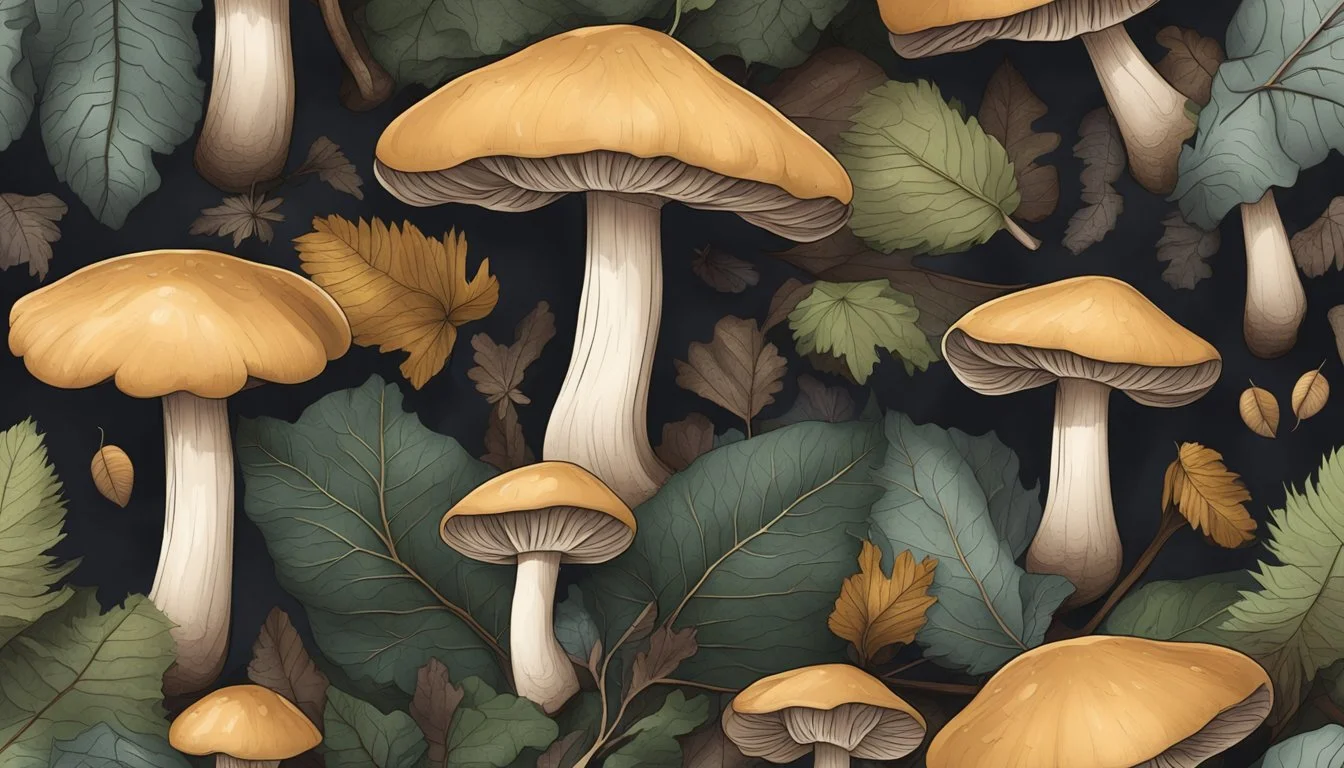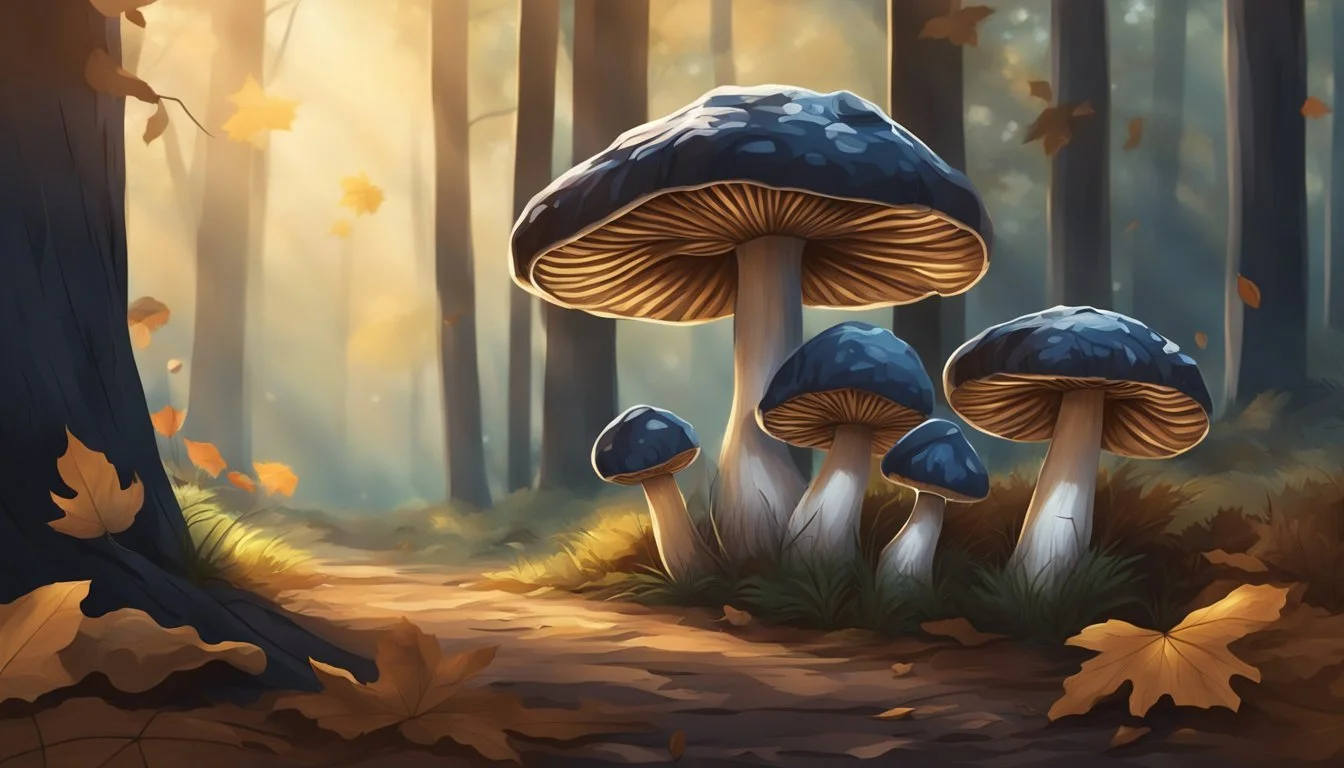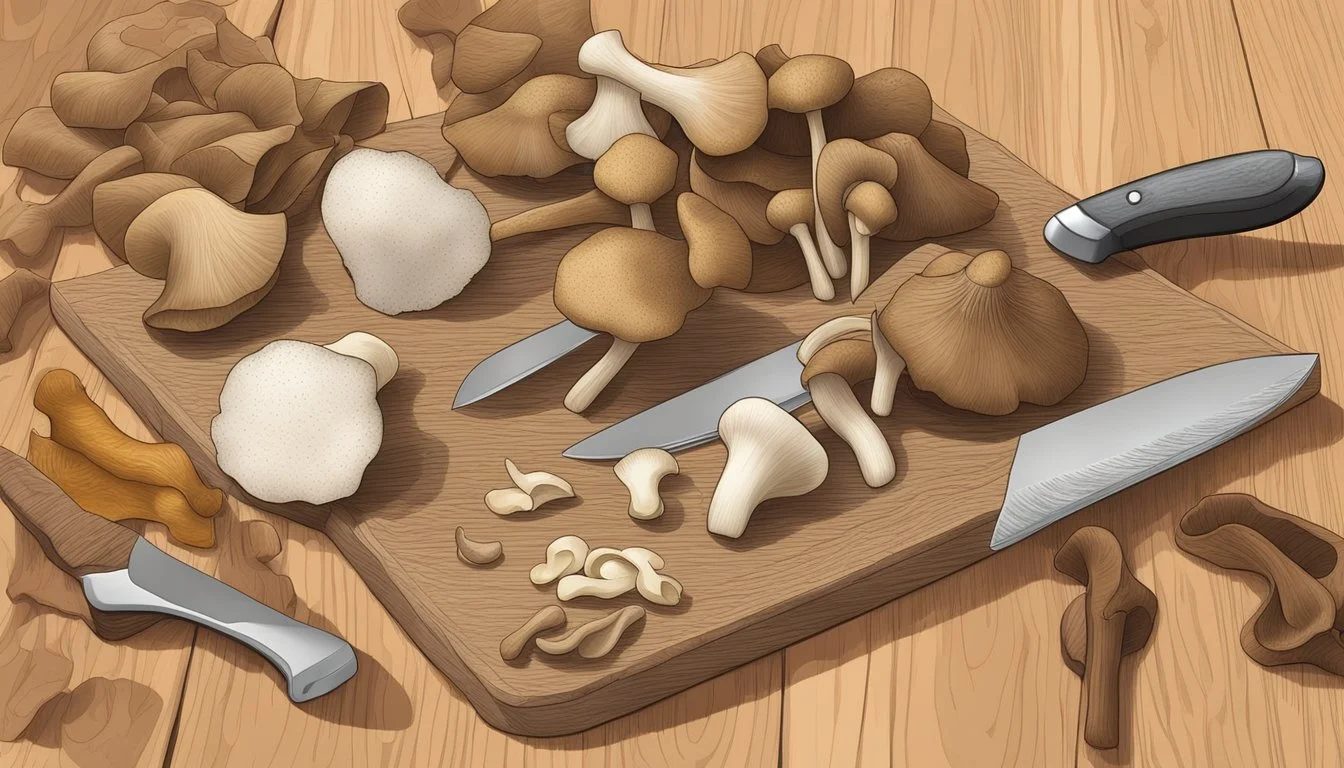Wood Ear Mushrooms Substitutes
Top Alternatives for Unique Recipes
When it comes to exploring the rich world of fungi in Chinese cuisine, wood ear mushrooms often stand out. Known for their unique texture and subtle flavor, they are a popular ingredient in many dishes, adding a delightful crunch. Yet, there are times when wood ear mushrooms might be unavailable, prompting the need for suitable substitutes.
For those trying to replicate the texture and culinary appeal of wood ear mushrooms, several alternatives are worth considering. Enoki mushrooms, with their tender texture, or bamboo fungus, which shares a similar consistency, can be excellent replacements. Each offers a different yet complementary profile that can enhance the dish without overpowering it.
Dried wood ear mushrooms also make a great option when fresh ones can't be found. Their concentrated flavor and familiar texture closely mimic the fresh variety. Other substitutes, such as smoked tofu or portobello mushrooms, bring their unique qualities to the table, ensuring that your culinary creations remain flavorful and texturally interesting.
Wood Ear Mushrooms Overview
Wood ear mushrooms are a unique fungi known primarily for their distinct texture and mild flavor. They are popular in Asian cuisine and offer various health benefits due to their nutritional content.
Characteristics
Wood ear mushrooms, also known as Auricularia auricula-judae, are characterized by their dark brown to black color and ear-like shape. These fungi typically have a gelatinous texture when fresh, becoming slightly crunchy when cooked. Cloud ear mushrooms, which are often confused with wood ear mushrooms, share a similar appearance but can be lighter in color and thinner in texture.
The surface of wood ear mushrooms is often wavy and wrinkled, adding an interesting visual element to dishes. They thrive in humid environments and are mainly found on decaying tree wood, especially elder trees. Their mild and earthy flavor makes them versatile in various culinary applications.
Culinary Uses
Wood ear mushrooms are a staple in Asian cuisine, particularly in Chinese dishes. Their mild flavor allows them to complement a wide range of ingredients without overpowering other flavors. They are frequently used in soups, stir-fries, and salads, where their unique texture adds contrast to softer ingredients.
In soups, wood ear mushrooms absorb the surrounding broth, enhancing their taste while retaining a slight chewiness. In stir-fries, they pair well with vegetables and proteins, soaking up sauces effectively. For salads, they provide a crunchy element that is both refreshing and unusual. Their ability to absorb flavors makes them an excellent addition to a variety of recipes.
Health Benefits
Wood ear mushrooms are not just appreciated for their culinary uses but also for their health benefits. They are rich in nutrients like iron, fiber, calcium, and protein. These components contribute to better overall health by supporting immune function, improving digestion, and strengthening bones.
High in dietary fiber, wood ear mushrooms aid in digestion and help maintain a healthy gut. The iron content is beneficial for preventing anemia, while calcium supports bone health. Additionally, they are low in calories and fat, making them suitable for weight management. Their nutritional profile makes them a valuable addition to a balanced diet, promoting various aspects of health through natural, wholesome food.
Identifying Quality Wood Ear Mushrooms
Quality wood ear mushrooms are distinguished by their texture and purity, whether fresh or dried. Ensuring they are clean, mold-free, and properly handled enhances both flavor and safety.
Fresh vs. Dried Varieties
Fresh wood ear mushrooms have a gelatinous look and feel, with a soft and pliable texture. They often have a velvety top side that can be covered in tiny hairs. When selecting fresh varieties, opt for those with a consistent, moist texture and vibrant color. Avoid those that appear dried out or shriveled.
Dried wood ear mushrooms are a practical alternative and often more accessible. They appear frail and thin, usually curled around themselves. Before use, they need to be rehydrated. Good quality dried mushrooms should rehydrate to a firm yet malleable texture. Ensure the dried varieties are free from debris and have no signs of mold.
Storage and Handling
To maintain their quality, store fresh wood ear mushrooms in a cool, dry place away from direct sunlight. They can be kept in the refrigerator but should be used within a few days for the best texture and flavor. Store them in a paper bag to prevent moisture buildup, which can cause spoilage.
Dried wood ear mushrooms have a longer shelf life and should be kept in an airtight container in a cool, dark cupboard. Proper storage ensures they remain free from moisture and potential contaminants. When ready to use, rehydrate them in warm water for about 20 minutes until they regain their soft, pliable texture.
Always inspect mushrooms closely—whether fresh or dried—for any signs of mold or spoilage. Clean and trim them thoroughly before cooking to ensure a safe and enjoyable dish.
Substitutes for Wood Ear Mushrooms
Finding the right substitute for wood ear mushrooms involves considering both texture and flavor. Some substitutes provide a similar crunchy texture, while others match the deep, earthy taste. Availability is also a crucial factor, as certain substitutes are more readily found in grocery stores.
Similar Texture Substitutes
Enoki Mushrooms offer a tender texture compared to the firm, slightly crunchy texture of wood ear mushrooms. They work well in soups and salads, providing a delicate textural difference.
Cloud Ear Mushrooms are another excellent option. Though they can be challenging to find, they boast a texture very similar to wood ear mushrooms. Their thin, slightly chewy consistency makes them ideal for stir-fries and soups.
Bamboo Fungus also has a texture similar to wood ear mushrooms. Though slightly different in appearance with its long stems, it can successfully replicate the texture in most dishes.
Similar Flavor Substitutes
Shiitake Mushrooms are known for their rich, umami flavor, which closely parallels that of wood ear mushrooms. They can be used in a variety of dishes, from stir-fries to broths.
Portobello Mushrooms bring a meaty texture and deep flavor, making them suitable for replacing wood ear mushrooms in recipes that require a robust taste. They are particularly good grilled or sautéed.
Chestnut Mushrooms present a mildly nutty taste, somewhat similar to wood ear mushrooms. They can be substituted in most recipes where a subtle yet earthy flavor is needed.
Commonly Available Substitutes
Button Mushrooms are one of the most easily found substitutes. While they lack the unique texture of wood ear mushrooms, their mild flavor makes them a versatile option in many recipes.
Oyster Mushrooms are widely available and can provide a good alternative with their tender texture and slightly seafood-like flavor. They work well in soups, stews, and sautéed dishes.
Cremini Mushrooms or baby bella mushrooms are another accessible choice. Their mildly earthy flavor and firm texture make them a practical substitute for wood ear mushrooms in most culinary uses.
Incorporating Substitutes into Recipes
When substituting wood ear mushrooms in various dishes, it's crucial to consider the texture, flavor, and cooking methods. Whether you are making stir-fries, soups, salads, or Western cuisine, there are specific ways to incorporate these substitutes to maintain or enhance your recipe's overall appeal.
Adjustments in Stir-Fries
Substitutes like shiitake mushrooms and enoki mushrooms fit well into stir-fries. Shiitake mushrooms have a stronger flavor and firmer texture, so use them sparingly and balance with ginger, scallions, and sesame oil.
Enoki mushrooms are tender and cook quickly, making them ideal when paired with tofu and vegetarian recipes. Add these mushrooms towards the end of cooking to keep their delicate texture intact. Bamboo fungus can also be used, noting its mild flavor and crunchy texture, blending well with stir-fried vegetables and light sauces.
Utilizing in Soups and Salads
For soups like hot and sour soup, cloud ear mushrooms or dried wood ear mushrooms are excellent. These substitutes absorb the broth flavors nicely while providing a pleasant chewiness. Rehydrate dried mushrooms in warm water for 20-30 minutes before adding them to the soup.
In salads, fresh wood ear or cloud ear mushrooms add a satisfying crunch. They pair well with crisp vegetables like onion and cucumber, and dressings with a touch of vinegar and sesame oil.
Creative Uses in Western Cuisine
Enoki mushrooms and shiitake mushrooms can be creatively incorporated into Western dishes. In pasta dishes, mushrooms can replace wood ear mushrooms to add depth of flavor and texture. Saute them with garlic and butter before tossing them with pasta.
In pizza toppings, shiitake mushrooms contribute an earthy flavor that complements cheese and tomato sauce. For casseroles, using mushrooms like portobello offers a meaty texture and rich flavor, enhancing heartier recipes typically featuring pork or chicken.
By thoughtfully selecting and applying these substitutes, you can adapt traditional recipes to new tastes and dietary needs.
Purchasing Guide
When looking to buy substitutes for wood ear mushrooms, consumers should focus on accessibility and quality. Ensuring you buy from reputable sources will help in obtaining fresh and suitable alternatives.
Where to Buy
Wood ear mushrooms and their substitutes can be found in various locations. Local grocery stores may carry some substitutes like shiitake or enoki mushrooms. However, Asian markets or Asian grocery stores are likely to have a broader selection including more exotic options like cloud ear mushrooms or bamboo fungus.
For those who prefer convenience, online platforms are a viable option. Websites specializing in gourmet ingredients or Asian grocery items often stock dried versions of these mushrooms, ensuring a year-round supply. Always check customer reviews and product descriptions for quality assurance before purchasing online.
Recognizing Freshness
When purchasing fresh substitutes, it's crucial to recognize signs of freshness. Look for mushrooms that are firm to the touch and free from slimy or wet spots. Shiitake mushrooms should have a rich brown cap with no cracks or drying. Enoki mushrooms should appear white and have tightly bunched stems.
For dried mushrooms like auricularia auricula (wood ear mushrooms), ensure they are not too brittle and have a consistent dark coloration. Avoid molds and overly shriveled or crumbly textures as these indicate poor quality or old stock. Proper storage in an airtight container can help maintain freshness after purchase.
Safe Consumption Tips
Ensuring the safe consumption of wood ear mushroom substitutes involves paying attention to potential toxins and mold and using proper preparation techniques. Each factor affects the quality and safety of the mushrooms.
Avoiding Toxins and Mold
Before consuming any mushroom substitutes, always inspect them for signs of mold or toxins. Mold can be identified by unusual discoloration or fuzzy growth on the surface.
Using mushrooms that are free from mold ensures they are clean and edible. Toxins can occur if the mushrooms are stored incorrectly or for too long. Keeping them in a cool, dry place can prevent the growth of unwanted substances.
If using dried mushrooms, rehydrate them properly by soaking in hot water. Discard the soaking water as it can contain residues.
Proper Preparation Techniques
Proper preparation enhances the nutrition and safety of wood ear mushroom substitutes. Begin by thoroughly washing fresh mushrooms to remove any dirt or contaminants.
Rehydrating dried mushrooms before use makes them easier to cook and digest. Typically, mushrooms are soaked in warm water for 20-30 minutes. Ensure they are clean by rinsing after soaking.
When cooking, mushrooms should reach an internal temperature of at least 165°F to eliminate potential pathogens. Whether stir-frying, boiling, or steaming, using high temperatures is crucial for safe consumption.
Professional Insights on Substitutes
Chefs and culinary experts have shared their insights on the best substitutes for wood ear mushrooms, offering both practical and creative solutions for menu planning. Below are specific recommendations from professionals in the field.
Advice from Culinary Experts
Shiitake Mushrooms are frequently recommended by chefs and food writers due to their rich, deep flavor and excellent ability to soak up sauces. This makes them a perfect substitute for wood ear mushrooms in stir-fries and soups.
Enoki Mushrooms provide a different texture, which is more tender compared to the firm texture of wood ear mushrooms. This allows for a unique variation in dishes while still enhancing the flavors.
Dried Wood Ear Mushrooms are another top choice, especially favored by personal chefs and restaurants. They offer the convenience of longer shelf life and can easily rehydrate to deliver a similar texture to fresh ones.
Bamboo Fungus, with its similar texture, provides an excellent replacement. This substitute is particularly noted for its visual presentation, making it a favorite in fine dining.
Integrating Substitutes in Menu Planning
When substituting wood ear mushrooms, it's crucial for caterers and menu planners to consider the flavor profile and texture differences. For instance, shiitake mushrooms should be used in a 1:1 ratio, leveraging their ability to absorb flavors and enhance dishes.
For a non-mushroom alternative, firm tofu can be incorporated due to its bland flavor and ability to soak up dressings and sauces, making it versatile in various dishes.
Enoki mushrooms can be utilized to add a tender texture to dishes like hot pots and salads. They are particularly recommended for dishes that benefit from a more delicate texture.
For events or menus that require aesthetic appeal, bamboo funguses’ unique appearance can add an exotic touch to plates, making them visually appealing for high-end dining experiences.
Using these insights from professionals in the culinary field can help achieve desired textures and flavors in dishes, ensuring that the substitution process maintains the integrity and quality of the original recipes.








